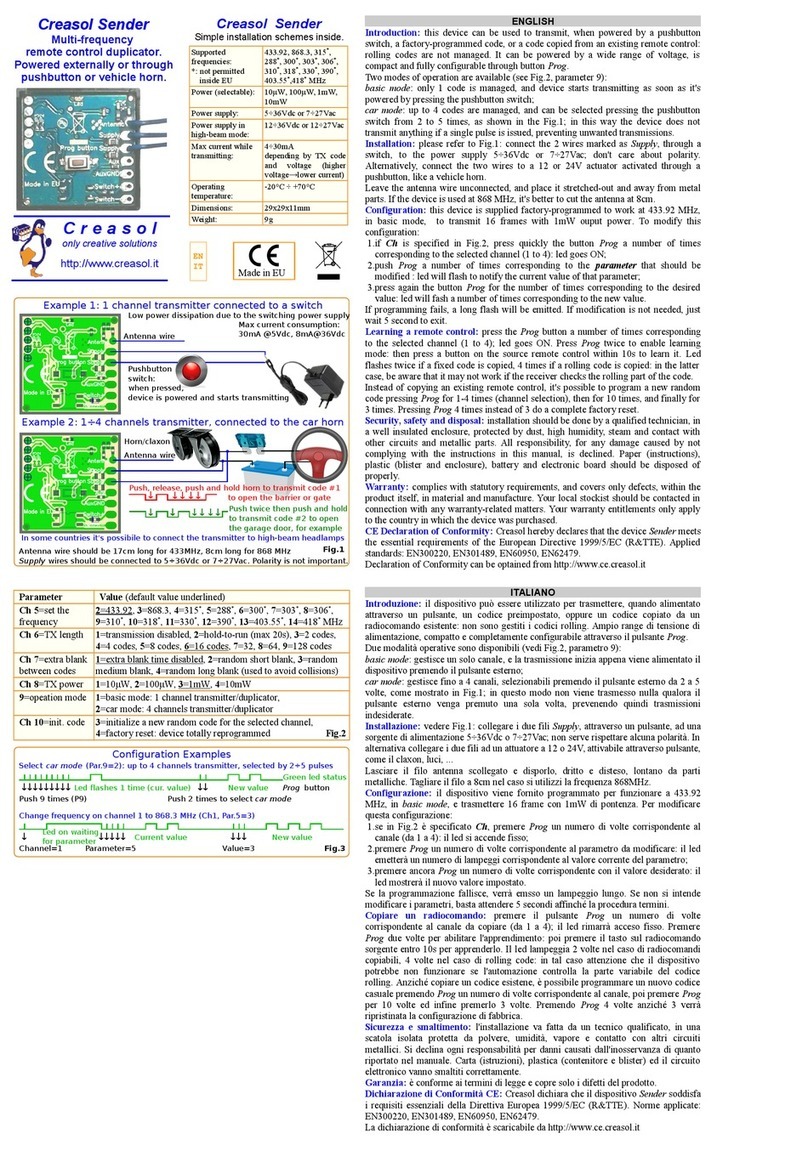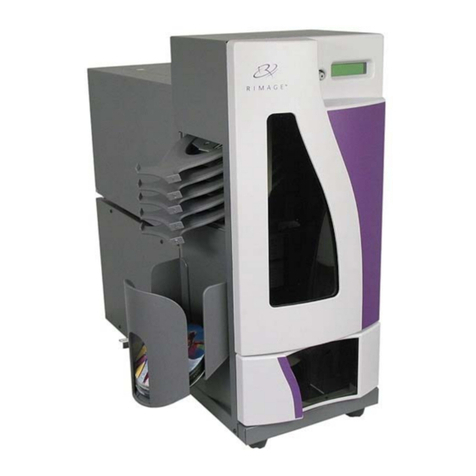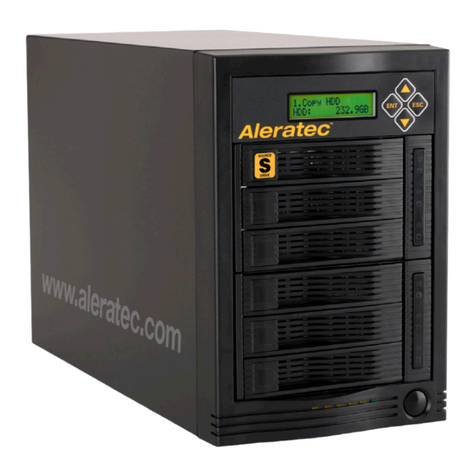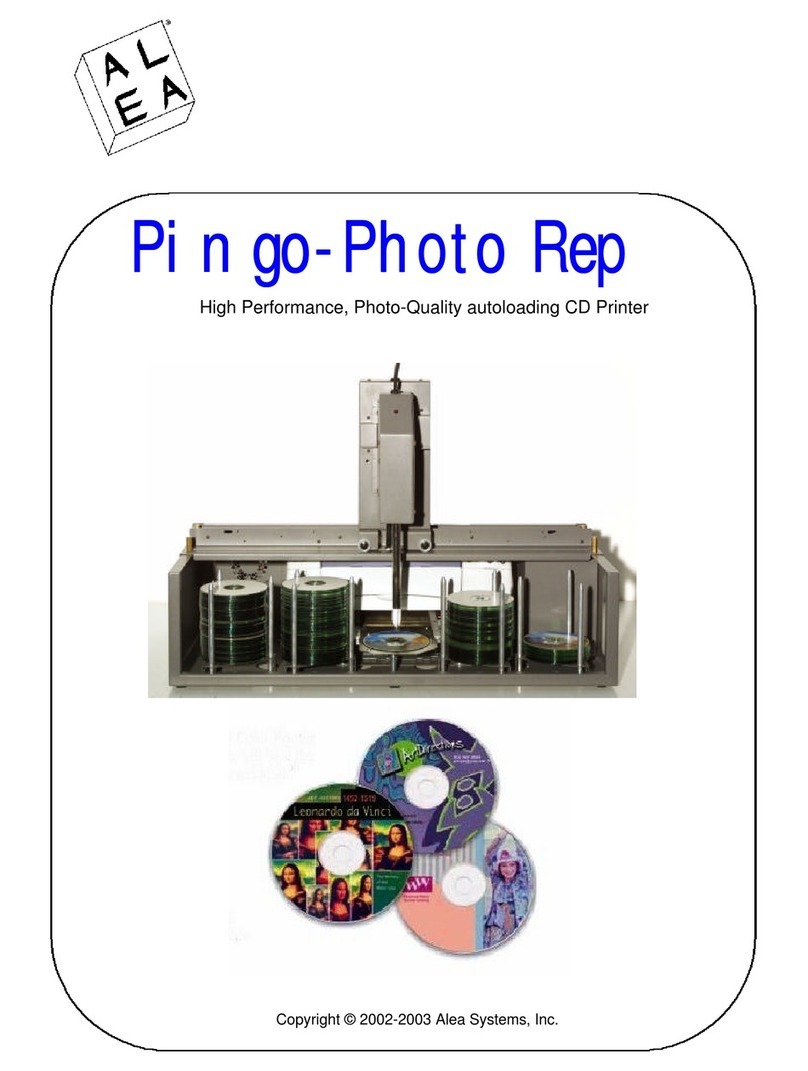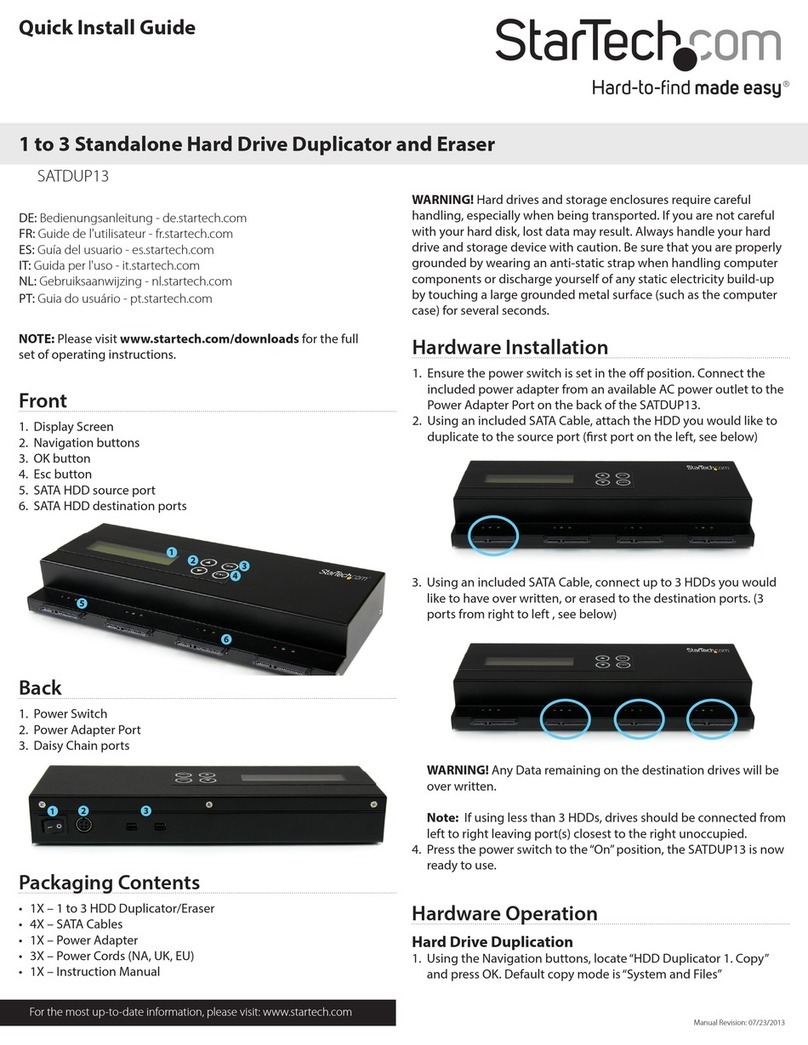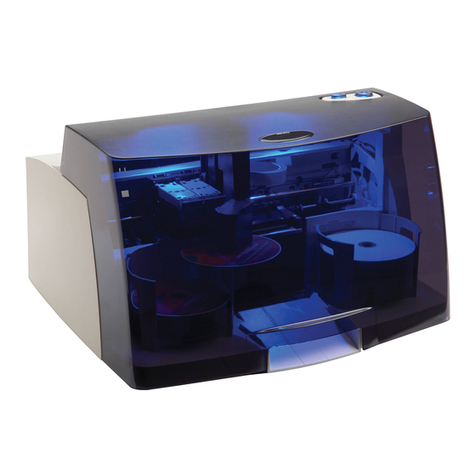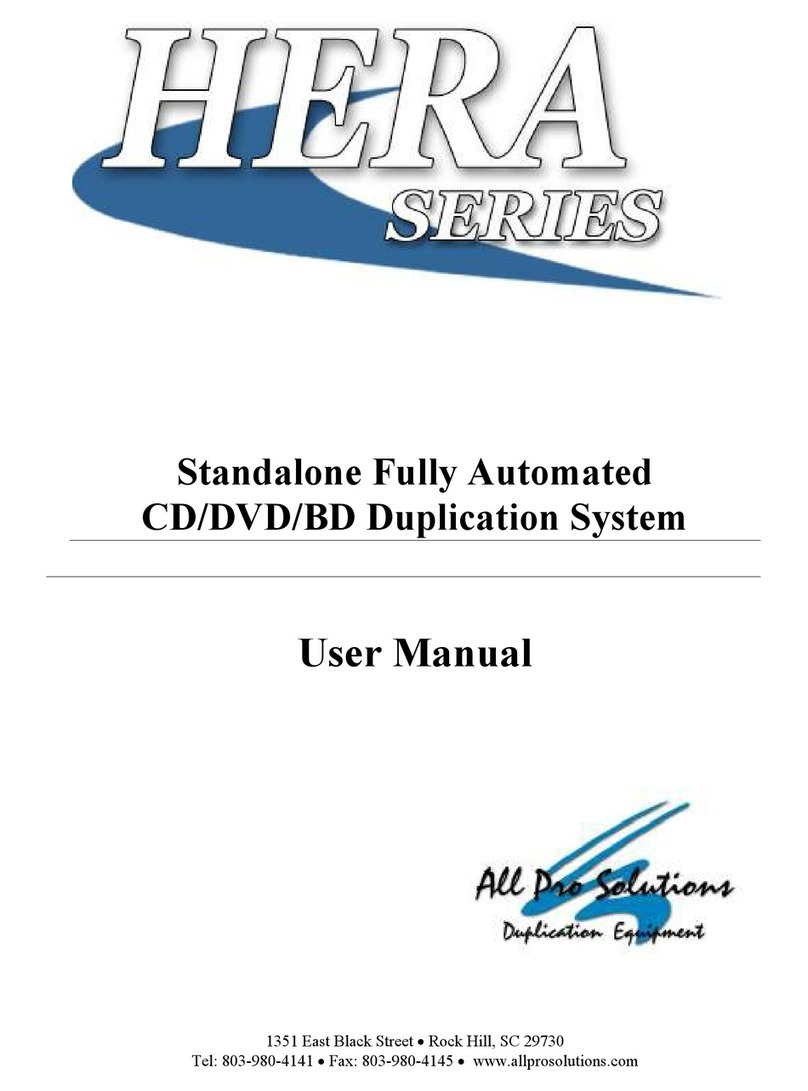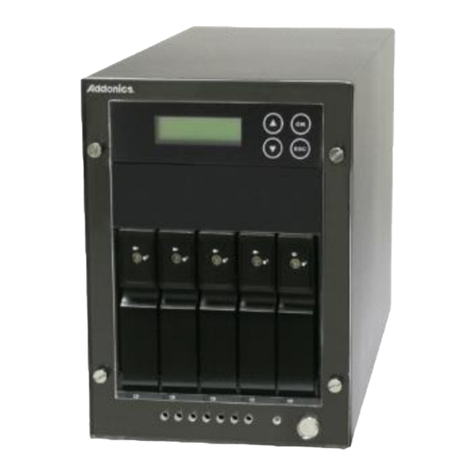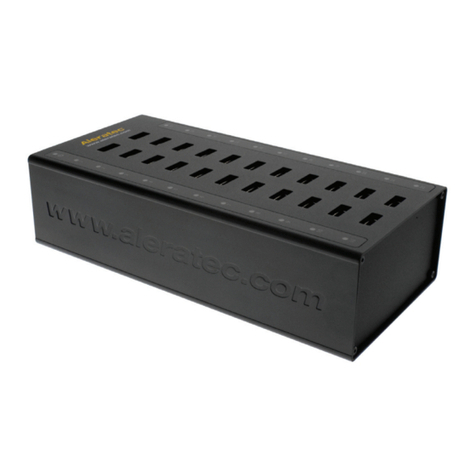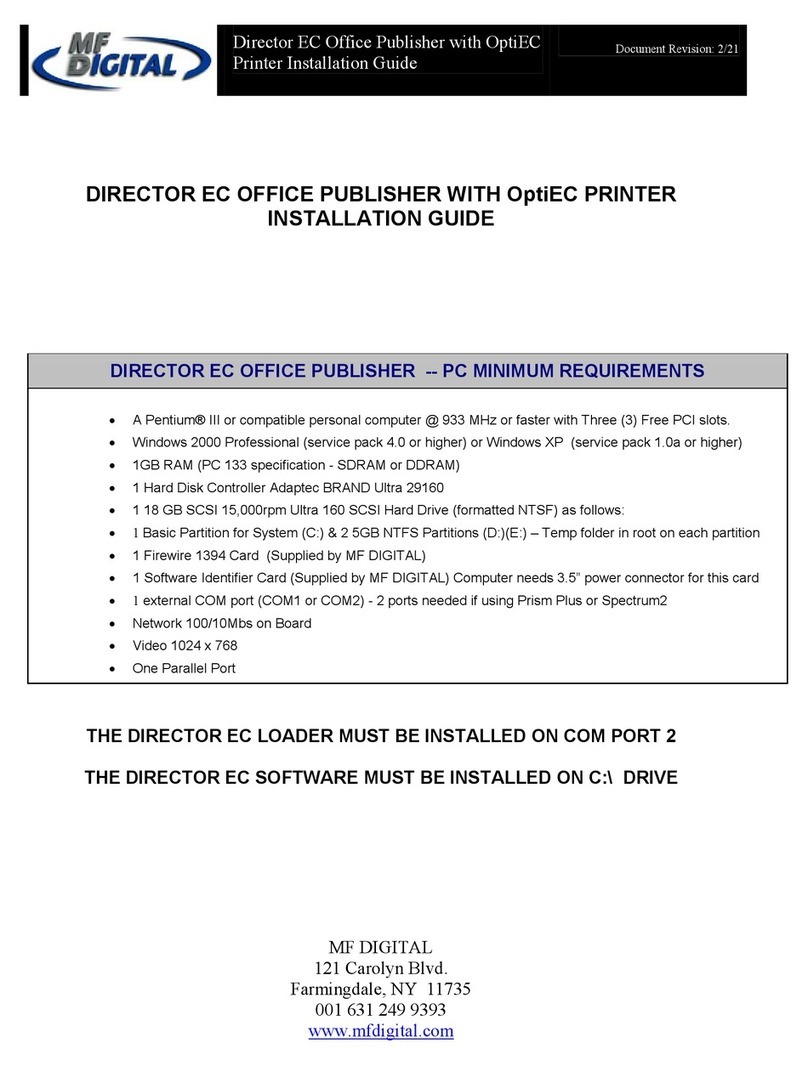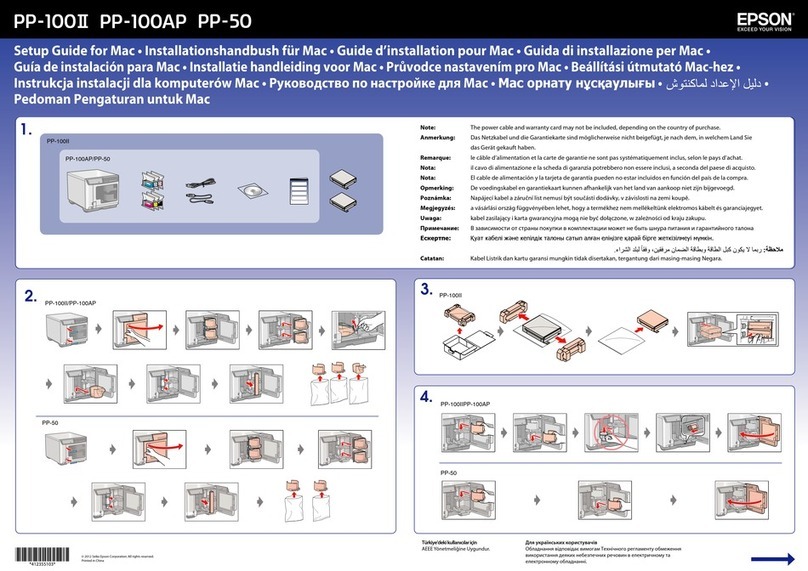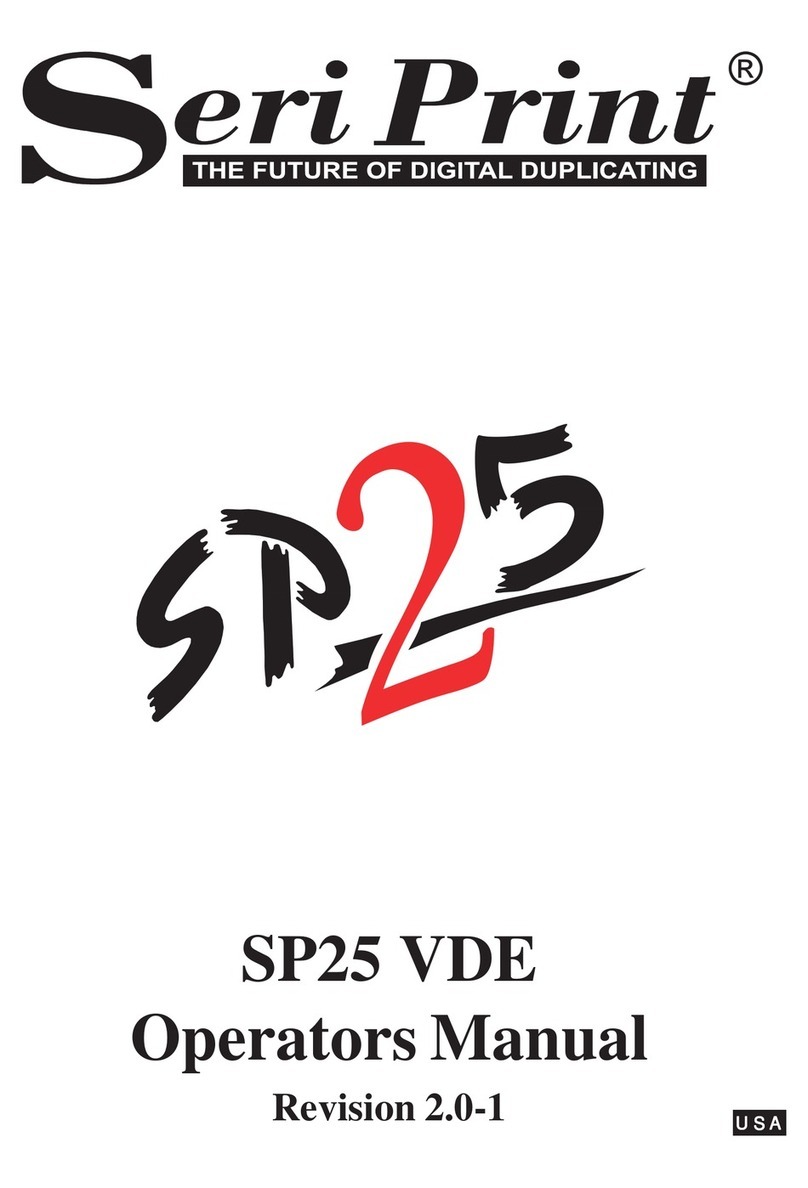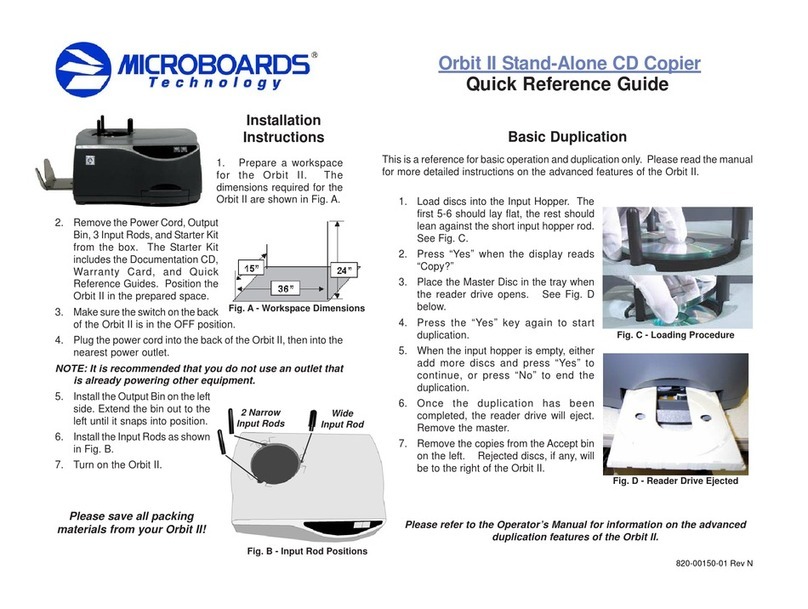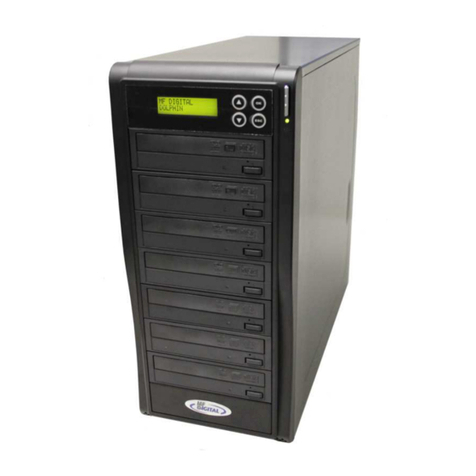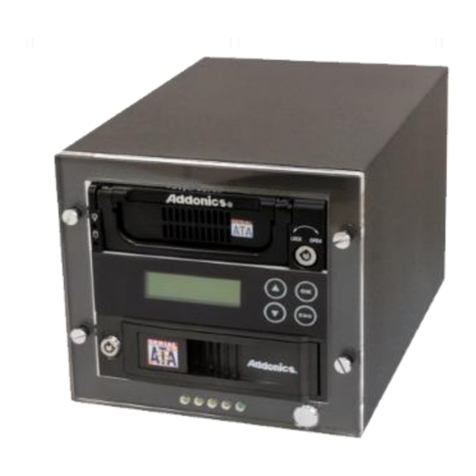Creasol Sender User manual

Made in EU
Creasol Sender
Multi-frequency 1÷4 ch
remote control duplicator.
Powered externally through
pushbutton or brake pedal
Creasol Sender
Simple installation schemes inside.
Supported
frequencies:
*: not permitted
inside EU
433.92, 868.3, 31 *,
288*, 300*, 303*, 306*,
310*, 318*, 330*, 390*,
403. *,418* MHz
Power (selectable): 10μW, 100μW, 1mW,
10mW
Power supply: 12÷36Vdc or 12÷27Vac
Power supply in
basic mode:
÷36Vdc or 7÷27Vac
Max current while
transmitting:
4÷30mA
depending by TX code
and voltage (higher
voltage→lower current)
Operating
temperature:
-20°C ÷ +70°C
Dimensions: 41x31x11mm
Weight: 10g
NGLISH
Introduction: this device can be used to transmit, when powered by a pushbutton
switch, a factory-programmed code, or a code copied from an existing remote control:
rolling codes are not managed. It can be powered by a wide range of voltage, is
compact and fully configurable through the Prog button (no need to open the box).
Three modes of operation are available (see Fig.2, parameter 9):
basic mode: only 1 code is managed, and device starts transmitting as soon as it's
powered by pressing the pushbutton switch;
pulsed mode: up to 4 channels, selected by a switch with 1÷4 pulses;
car mode: up to 4 channels, selected by a switch with 2÷ pulses.
Installation: please refer to Fig.1: connect the 2 wires marked as Supply, through a
switch, to the power supply 12÷36Vdc or 12÷27Vac; don't care about polarity.
Alternatively, connect the two wires to a 12 or 24V actuator activated through a
pushbutton, like the vehicle brake lights, highbeam lights, ...
Leave the antenna wire unconnected, and place it stretched-out and away from metal
parts. If the device is used at 868 MHz, it's better to cut the antenna at 8cm.
Configuration: device is factory programmed in basic mode to transmit 16 frames
with 1mW ouput power at 433.92MHz. To modify this configuration see Fig.2:
1.if Ch is specified, press quickly the button Prog a number of times corresponding to
the selected channel (1 to 4): led goes ON;
2.push Prog a number of times corresponding to the parameter that should be
modified : led will flash to notify the current value of that parameter;
3.press again the button Prog for the number of times corresponding to the desired
value: led will fash a number of times corresponding to the new value.
If programming fails, a long flash will be emitted. If modification is not needed, just
wait second to exit. Four codes are managed, and can be selected pressing the
pushbutton switch as shown in the Fig.1; in car mode, device does not transmit
anything if a single pulse is issued, preventing unwanted transmissions.
Learning a remote control: press the Prog button a number of times corresponding
to the selected channel (1 to 4); led goes ON. Press Prog twice to enable learning
mode: then press a button on the source remote control within 10s to learn it. Led
flashes twice if a fixed code is copied, 4 times if a rolling code is copied: in the latter
case, be aware that it may not work if the receiver checks the rolling part of the code.
Instead of copying an existing remote control, it's possible to program a new random
code pressing Prog for 1-4 times (channel selection), then for 10 times, and finally for
3 times. In the last step, pressing Prog 4 times instead of 3 do a complete factory reset.
Security, safety and disposal: installation should be done by a qualified technician, in
a well insulated enclosure, protected by dust, humidity, steam and contact with other
circuits and metallic parts. All responsibility, for any damage caused by not complying
with the instructions in this manual, is declined. Paper (instructions), plastic (blister
and enclosure) and electronic board should be disposed of properly.
Warranty: complies with statutory requirements, and covers only defects, within the
product itself, in material and manufacture. Your local stockist should be contacted in
connection with any warranty-related matters. Your warranty entitlements only apply
to the country in which the device was purchased.
CE Declaration of Conformity: Creasol hereby declares that the device Sender meets
the essential requirements of the European Directive 1999/ /EC (R&TTE). Applied
standards: EN300220, EN301489, EN609 0, EN62479.
Declaration of Conformity can be optained from http://www.ce.creasol.it
Parameter Value (default value underlined)
Ch 5=set the
frequency
= 433.92, 3=868.3, 4=31 *, 5=288*, 6=300*, 7=303*, 8=306*,
9=310*, 10=318*, 11=330*, 1 =390*, 13=403. *, 14=418* MHz
Ch 6=TX length 1=transmission disabled, =hold-to-run (max 20s), 3=2 codes,
4=4 codes, 5=8 codes, 6 =16 codes, 7=32, 8=64, 9=128 codes
Ch 7=extra blank
between codes
1 =extra blank time disabled, =random short blank, 3=random
medium blank, 4=random long blank (used to avoid collisions)
Ch 8=TX power 1=10μW, =100μW, 3 =1mW, 4=10mW
9=opeation mode 1=basic mode: 1 channel transmitter/duplicator,
=pulsed mode: 4 channel transmitter/duplicator controlled by a
switch: 1pulses→ch1, 2pulses→ch2, 3pulses→ch3,4pulses→ch4
3=car mode: 4 channels transmitter/duplicator controlled by a
switch: 2pulses→ch1, 3pulses→ch2, 4pulses→ch3, pulses→ch4
Ch 10=init. code 3=initialize a new random code for the selected channel,
4=factory reset: device totally reprogrammed Fig.
When Ch is specified, Prog button must be pushed in advance a number of times
corresponding to the channel (from 1 to 4). The green Led will go ON.
Press Prog button a number of times corresponding the parameter: the green Led will
flashes a number of times corresponding with the actual value.
If Parameter is less equal of 4, start program/erase procedure, else press Prog button a
number of times corresponding to the desired value.
Frequencies marked with an asterisk are not enabled if product is distributed in
Europe.
FRANÇAIS
Introduction: cet appareil peut être utilisé pour transmettre, lorsqu'il est enclenché par
un bouton poussoir ou autre contact, un code programmé en usine, ou un code copié
depuis télécommande existante. Les codes tournants ne sont pas gérés.
Il est compact et entièrement configurable via le bouton Prog.
Trois modes de fonctionnement sont disponibles (voir Fig.2, paramètre 9) :
Mode basique: seulement 1 code est géré, et l'appareil commence la transmission dès
qu'il est alimenté par le bouton poussoir.
Mode impulsion: jusqu'à 4 canaux, choisis par l'interrupteur entre 1 et 4 appuis.
Mode voiture: jusqu'à 4 canaux, choisis par un interrupteur entre 2 et appuis.
Installation: Référez-vous au schéma 1 : connectez les 2 fils indiqués Supply, via un
interrupteur, à l'alimentation 12÷36Vdc ou 12÷27Vac. La polarité n'est pas importante.
Vous pouvez aussi connectez les deux fils à un actionneur 12 ou 24V activé par un
poussoir, tels que les feux de freinage ou les phares d'un véhicule. Laissez le fil de
l'antenne libre de toute connexion et placez-le de manière éloignée des parties
métalliques. Si l'appareil est utilisé à 868 MHz, il vaut mieux couper l'antenne à 8 cm.
Configuration: l'appareil est programmé au mode basique pour transmettre 16 trames
avec une sortie de 1mW à 433,92MHz. Pour modifier cette configuration voir Fig.2:
1. Si Ch est indiqué, pressez rapidement le bouton Prog le nombre de fois
correspondant au canal choisi (1 à 4). La Led s'allume.
2. Appuyez sur Prog le nombre de fois correspond au paramètre que vous souhaitez
modifier: la Led va clignoter pour indiquer la valeur actuelle de ce paramètre;
3. Appuyez à nouveau sur le bouton Prog le nombre de fois correspondant à la valeur
souhaitée: la Led va clignoter un nombre de fois correspondant à la nouvelle valeur.
Si la programmation échoue, un flash prolongé va être émis. Si la modification n’est
pas nécessaire, veuillez simplement attendre secondes pour quitter le menu. Quatre
codes sont gérés et peuvent être sélectionnés en appuyant sur le bouton poussoir
montré sur la Fig.1; en mode voiture, l’appareil ne transmet rien si une impulsion seule
est envoyée, évitant ainsi des transmissions envoyées par erreur.
Apprentissage d’une télécommande: appuyez sur le bouton Prog un nombre de fois
correspondant au canal choisi (1 à 4) ; la LED s’allume. Appuyez sur Prog deux fois
pour activer le mode apprentissage: appuyez ensuite sur un bouton de la
télécommande source dans les 10 secondes qui suivent pour l’apprendre. La LED
clignote deux fois si un code fixe est copié, 4 fois si un code tournant est copié : dans
ce second cas, prenez en compte que cela peut ne pas fonctionner si le récepteur
vérifie la partie tournante du code. Au lieu de copier une télécommande existante, il
est possible de programmer un nouveau code aléatoire en présent le bouton Prog 1 à 4
fois (sélection du canal), puis 10 fois, et enfin 3 fois. À la dernière étape, appuyer
Prog 4 fois au lieu de 3 permet de charger le paramétrage d’usine par défaut.
Recommandations de sécurité et de disposition : l’installation doit être effectuée par
un technicien qualifié, dans un emplacement suffisamment isolé, protégé de la
poussière, de l’humidité, de la vapeur et en contact avec d’autres circuits et des parties
métalliques. Toute responsabilité est déclinée pour les dommages résultant d’un non
respect des instructions de ce manuel. Le papier (mode d’emploi), le plastique (boitier
et blister) doivent être éliminés de manière appropriée.
Garantie: respecte les exigences légales, et couvre uniquement les défauts propres au
produit lui-même, sur le matériel et la fabrication. Votre revendeur local devrait être
contacté pour toute question relative à la garantie. Votre droit à la garantie ne peut
s’exercer que dans le pays dans lequel le produit a été acheté.
Déclaration de Conformité CE: Creasol déclare par la présente que l’appareil Sender
suit les obligations de la Directive Européenne 1999/ /EC (R&TTE). Standards
appliqués : EN300220, EN301489, EN609 0, EN62479.
La Déclaration de Conformité peut être obtenue sur http://www.ce.creasol.it
EN
IT
Creasol
only creative solutions
http://www.creasol.it
Configuration Examples
Select car mode (Par.9=3): up to 4 channels transmitter, selecte by 2÷5 pulses
Fig.3
↓↓↓↓↓↓↓↓↓ ↓↓ Prog button
Green le
Push 9 times (P9)
Le flashes 1 time (cur. value)
Push 3 times to select car mode
New value
Change frequency on channel 1 to 868.3 MHz (Ch1, Par.5=3)
↓ ↓↓↓↓↓ ↓↓↓
Channel=1 Parameter=5 Value=3
New valueCurrent value
Le on waiting
for parameter
↓

Made in EU
Parameter Value (default value underlined)
Ch 5=set the
frequency
= 433.92, 3=868.3, 4=31 *, 5=288*, 6=300*, 7=303*, 8=306*,
9=310*, 10=318*, 11=330*, 1 =390*, 13=403. *, 14=418*
MHz
Ch 6=TX length 1=transmission disabled, =hold-to-run (max 20s), 3=2
codes, 4=4 codes, 5=8 codes, 6 =16 codes, 7=32, 8=64,
9=128 codes
Ch 7=extra
blank between
codes
1 =extra blank time disabled, =random short blank,
3=random medium blank, 4=random long blank (used to
avoid collisions)
Ch 8=TX power 1=10μW, =100μW, 3 =1mW, 4=10mW
9=opeation
mode
1=basic mode: 1 channel transmitter/duplicator,
=pulsed mode: 4 channel transmitter/duplicator controlled
by a switch: 1pulses→ch1, 2pulses→ch2,
3pulses→ch3,4pulses→ch4
3=car mode: 4 channels transmitter/duplicator controlled by a
switch: 2pulses→ch1, 3pulses→ch2,
4pulses→ch3, pulses→ch4
Ch 10=init.
code
3=initialize a new random code for the selected channel,
4=factory reset: device totally reprogrammed
Fig.
When Ch is specified, Prog button must be pushed in advance a number of times
corresponding to the channel (from 1 to 4). The green Led will go ON.
Press Prog button a number of times corresponding the parameter: the green Led
will flashes a number of times corresponding with the actual value.
If Parameter is less equal of 4, start program/erase procedure, else press Prog
button a number of times corresponding to the desired value.
Frequencies marked with an asterisk are not enabled if product is distributed in
Europe.
ITALIANO
Introduzione: il dispositivo può essere utilizzato per trasmettere, quando alimentato
attraverso un pulsante, un codice preimpostato, oppure un codice copiato da un
radiocomando esistente: non sono gestiti i codici rolling. Ampio range di tensione di
alimentazione, compatto e completamente configurabile attraverso il pulsante Prog.
Due modalità operative sono disponibili (vedi Fig.2, parametro 9):
basic mode: gestisce un solo canale, e la trasmissione inizia appena viene alimentato il
dispositivo premendo il pulsante esterno;
pulsed mode: 4 canali, selezionabili attraverso pulsante con 1÷4 impulsi;
car mode: gestisce fino a 4 canali, selezionabili premendo il pulsante esterno da 2 a
volte, come mostrato in Fig.1; in questo modo non viene trasmesso nulla qualora il
pulsante esterno venga premuto una sola volta, prevenendo quindi trasmissioni
indesiderate.
Installazione: vedere Fig.1: collegare i due fili Supply, attraverso un pulsante, ad una
sorgente di alimentazione ÷36Vdc o 7÷27Vac; non serve rispettare alcuna polarità. In
alternativa collegare i due fili ad un attuatore a 12 o 24V, attivabile attraverso pulsante,
come il claxon, luci, ...
Lasciare il filo antenna scollegato e disporlo, dritto e disteso, lontano da parti
metalliche. Tagliare il filo a 8cm nel caso si utilizzi la frequenza 868MHz.
Configurazione: il dispositivo viene fornito programmato per funzionare a 433.92
MHz, in basic mode, e trasmettere 16 frame con 1mW di pontenza. Per modificare
questa configurazione:
1.se in Fig.2 è specificato Ch, premere Prog un numero di volte corrispondente al
canale (da 1 a 4): il led si accende fisso;
2.premere Prog un numero di volte corrispondente al parametro da modificare: il led
emetterà un numero di lampeggi corrispondente al valore corrente del parametro;
3.premere ancora Prog un numero di volte corrispondente con il valore desiderato: il
led mostrerà il nuovo valore impostato.
Se la programmazione fallisce, verrà emsso un lampeggio lungo. Se non si intende
modificare i parametri, basta attendere secondi affinché la procedura termini.
Copiare un radiocomando: premere il pulsante Prog un numero di volte
corrispondente al canale da copiare (da 1 a 4); il led rimarrà acceso fisso. Premere
Prog due volte per abilitare l'apprendimento: poi premere il tasto sul radiocomando
sorgente entro 10s per apprenderlo. Il led lampeggia 2 volte nel caso di radiocomandi
copiabili, 4 volte nel caso di rolling code: in tal caso attenzione che il dispositivo
potrebbe non funzionare se l'automazione controlla la parte variabile del codice
rolling. Anziché copiare un codice esistene, è possibile programmare un nuovo codice
casuale premendo Prog un numero di volte corrispondente al canale, poi premere Prog
per 10 volte ed infine premerlo 3 volte. Premendo Prog 4 volte anziché 3 verrà
ripristinata la configurazione di fabbrica.
Sicurezza e smaltimento: l'installazione va fatta da un tecnico qualificato, in una
scatola isolata protetta da polvere, umidità, vapore e contatto con altri circuiti
metallici. Si declina ogni responsabilità per danni causati dall'inosservanza di quanto
riportato nel manuale. Carta (istruzioni), plastica (contenitore e blister) ed il circuito
elettronico vanno smaltiti correttamente.
Garanzia: è conforme ai termini di legge e copre solo i difetti del prodotto.
Dichiarazione di Conformità CE: Creasol dichiara che il dispositivo Sender soddisfa
i requisiti essenziali della Direttiva Europea 1999/ /EC (R&TTE). Norme applicate:
EN300220, EN301489, EN609 0, EN62479.
La dichiarazione di conformità è scaricabile da http://www.ce.creasol.it
Creasol Sender
Multi-frequency 1÷4 ch
remote control duplicator.
Powered externally through
pushbutton or brake pedal
Creasol Sender
Simple installation schemes inside.
Supported
frequencies:
*: not permitted
inside EU
433.92, 868.3, 31 *,
288*, 300*, 303*, 306*,
310*, 318*, 330*, 390*,
403. *,418* MHz
Power (selectable): 10μW, 100μW, 1mW,
10mW
Power supply: 12÷36Vdc or 12÷27Vac
Power supply in
basic mode:
÷36Vdc or 7÷27Vac
Max current while
transmitting:
4÷30mA
depending by TX code
and voltage (higher
voltage→lower current)
Operating
temperature:
-20°C ÷ +70°C
Dimensions: 41x31x11mm
Weight: 10g
NGLISH
Introduction: this device can be used to transmit, when powered by a pushbutton
switch, a factory-programmed code, or a code copied from an existing remote control:
rolling codes are not managed. It can be powered by a wide range of voltage, is
compact and fully configurable through the Prog button (no need to open the box).
Three modes of operation are available (see Fig.2, parameter 9):
basic mode: only 1 code is managed, and device starts transmitting as soon as it's
powered by pressing the pushbutton switch;
pulsed mode: up to 4 channels, selected by a switch with 1÷4 pulses;
car mode: up to 4 channels, selected by a switch with 2÷ pulses.
Installation: please refer to Fig.1: connect the 2 wires marked as Supply, through a
switch, to the power supply 12÷36Vdc or 12÷27Vac; don't care about polarity.
Alternatively, connect the two wires to a 12 or 24V actuator activated through a
pushbutton, like the vehicle brake lights, highbeam lights, ...
Leave the antenna wire unconnected, and place it stretched-out and away from metal
parts. If the device is used at 868 MHz, it's better to cut the antenna at 8cm.
Configuration: device is factory programmed in basic mode to transmit 16 frames
with 1mW ouput power at 433.92MHz. To modify this configuration see Fig.2:
4.if Ch is specified, press quickly the button Prog a number of times corresponding to
the selected channel (1 to 4): led goes ON;
.push Prog a number of times corresponding to the parameter that should be
modified : led will flash to notify the current value of that parameter;
6.press again the button Prog for the number of times corresponding to the desired
value: led will fash a number of times corresponding to the new value.
If programming fails, a long flash will be emitted. If modification is not needed, just
wait second to exit. Four codes are managed, and can be selected pressing the
pushbutton switch as shown in the Fig.1; in car mode, device does not transmit
anything if a single pulse is issued, preventing unwanted transmissions.
Learning a remote control: press the Prog button a number of times corresponding to
the selected channel (1 to 4); led goes ON. Press Prog twice to enable learning mode:
then press a button on the source remote control within 10s to learn it. Led flashes
twice if a fixed code is copied, 4 times if a rolling code is copied: in the latter case, be
aware that it may not work if the receiver checks the rolling part of the code.
Instead of copying an existing remote control, it's possible to program a new random
code pressing Prog for 1-4 times (channel selection), then for 10 times, and finally for
3 times. In the last step, pressing Prog 4 times instead of 3 do a complete factory reset.
Security, safety and disposal: installation should be done by a qualified technician, in
a well insulated enclosure, protected by dust, humidity, steam and contact with other
circuits and metallic parts. All responsibility, for any damage caused by not complying
with the instructions in this manual, is declined. Paper (instructions), plastic (blister
and enclosure) and electronic board should be disposed of properly.
Warranty: complies with statutory requirements, and covers only defects, within the
product itself, in material and manufacture. Your local stockist should be contacted in
connection with any warranty-related matters. Your warranty entitlements only apply
to the country in which the device was purchased.
CE Declaration of Conformity: Creasol hereby declares that the device Sender meets
the essential requirements of the European Directive 1999/ /EC (R&TTE). Applied
standards: EN300220, EN301489, EN609 0, EN62479.
Declaration of Conformity can be optained from http://www.ce.creasol.it
Configuration Examples
Select car mode (Par.9=3): up to 4 channels transmitter, selecte by 2÷5 pulses
Fig.3
↓↓↓↓↓↓↓↓↓ ↓↓ Prog button
Green le
Push 9 times (P9)
Le flashes 1 time (cur. value)
Push 3 times to select car mode
New value
Change frequency on channel 1 to 868.3 MHz (Ch1, Par.5=3)
↓ ↓↓↓↓↓ ↓↓↓
Channel=1 Parameter=5 Value=3
New valueCurrent value
Le on waiting
for parameter
↓
C r e a s o l
only creative solutions
http://www.creasol.it EN
FR
Other Creasol Disc Duplicator manuals
